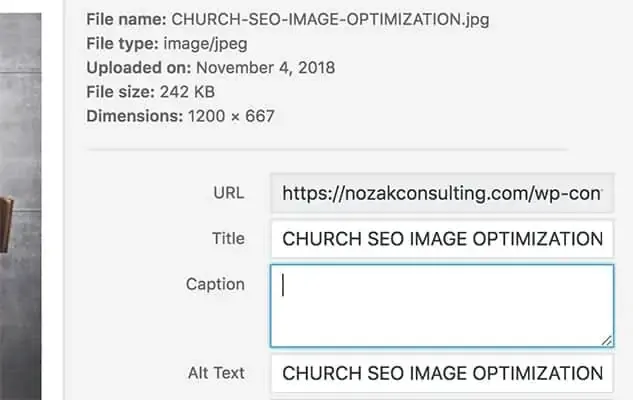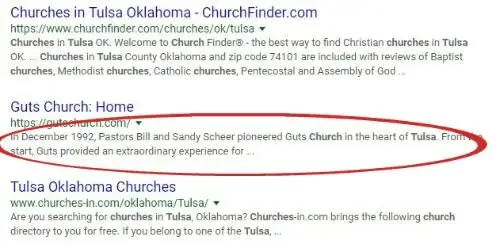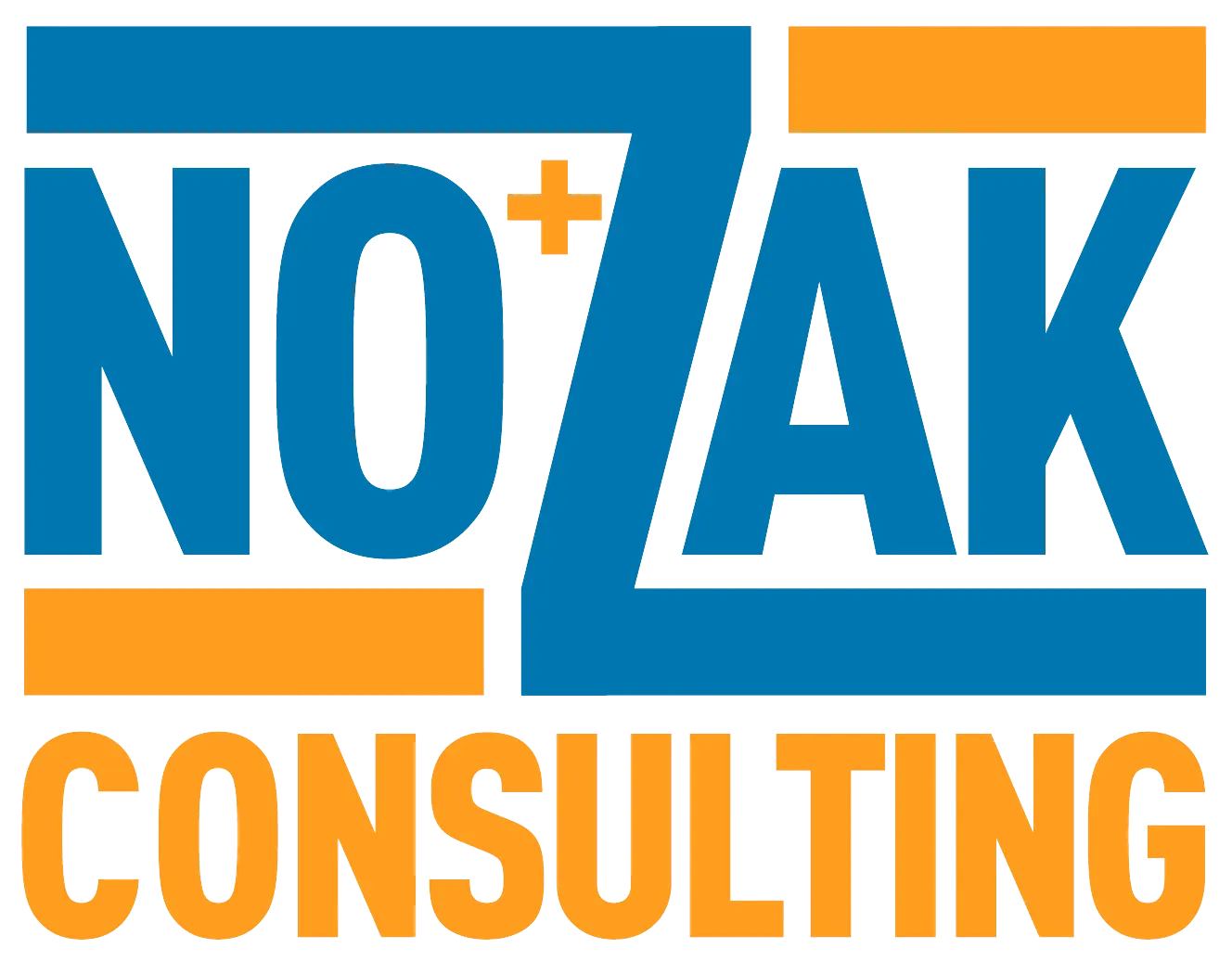Church SEO
Search Engine Optimization (SEO) can help your church by extending your online reach, getting your message in front of more people online and help your church show up higher within search results, for things like church near me. This article will go over what exactly church SEO is, and how you can start incorporating it into your church’s website.
Every week our team at Nozak Consulting provides customized dental marketing services to local, regional, and national dental practices and labs just like yours. Every month you’ll get detailed reporting that shows you exactly how your reputation is being managed online and showing you the ground you’re gaining with search engine optimizations, paid search, video marketing, and more.
We’ll cover the following church SEO information:
MY PERSONAL STORY

A few years ago our family was considering a few different cities to relocate to. We had no warm contacts in the cities that we were considering moving to, no friends, no family, no information other than what was available online.
At the top of our priority list for a new hometown was finding a church we could become planted in and call the church community our home. Every church we considered was the result of a Geo-modified Google search query i.e. Nashville churches. It was exhausting, stressful and at times frustrating.
It required a lot of digging and sifting through search results in most cases, but every once and a while a church would appear right on page 1 of our search that was an amazing fit and ended up being added to our list of churches to visit in person.
Our family is not the only family out there who makes their place of worship a key deciding factor when considering a move to a new town. Each year hundreds of thousands of people migrate to new cities and are not sure where they are going to worship.
SEO can be a key factor in making sure your church is found online.
WHY SEO MATTERS FOR YOUR CHURCH
SEO matters simply because the level of optimization that your website has is directly related to how visible it will be within search results. In other words: the more visible you are, i.e. closer to the top of search results, there is higher likelihood of people looking for a church actually finding your website.
SEO (Search Engine Optimization) combines web development, design and content in a specific way that allows your church’s website to be recognized by Google and other search engines. SEO largely determines where your church’s website shows up in Google search results.
You can have the most amazing website out there and have an awesome representation of your church, but if your site isn’t optimized, people are not going to find you.
If you’ve taken the time to invest in a website for your church, there are many easy and simple changes you can start making to increase your visibility online, using SEO principles.
SEO can be a little intimidating and get technical at times. However, you don’t have to be a complete SEO expert to make some small changes that could have a BIG impact on your church’s website.
We’ll go over some key factors that search engines look at when someone is searching for a church or specific ministry both locally, and nationally.
CHECK OUT SOME THE NONPROFITS WE WORK WITH:
- Against Global Hunger
- #racismstinks
- Accelerated Prep
- GoLife Mobile Medical
- Marriage and Family Initiative
- Victory Christian Center
- Little Lighthouse
- Employment Resources Inc.
- ERI at Home
- D-Luxe Properties
- Seed Power Foundation
- Jeff Hoyne
- Oral Roberts University
TWO CLASSIFICATIONS OF CHURCH SEO

SEO is typically divided into two main types:
- On-page SEO: Optimizing content the proper way on each of your website’s pages
- Off-page SEO: Directory information, backlinks, social media, proper NAP (Name, Address, Phone-number)
ON PAGE CHURCH SEO
PROPER TEXT FORMATTING
WHAT’S THE LEVEL OF IMPORTANCE?
H1 as you probably guessed – is your highest level of text tag. We advise only have one H1 per page, and your H1 should be considered the title of the entire web page. This simply tells Google, and users search Google for your church “Hey THIS (H1) is what this web page is about.
So for your home page, your H1 is going to be the name of your church, and on your “About Us” page, your H1 is going to be “About Us”. This process should repeat for each page of your church’s website.
H2 text would be considered sub-headings on a given webpage for your church. Your H2 texts should support the overall H1 of each page. So, going back to the example of your “About Us” page: You’d have your H1 of “About Us” and then your H2 text may be “Our Team” with a section below it about your church staff, and then you may have another section with an H2 of “Our beliefs” with supporting content about what your church believes, and maybe sections with correlating H2s about your children’s ministry or youth group.
H3 is simply the next level down the chain of hierarchy for heading text. We want the H3s to feed into our H2s with supporting subheadings. For our “About Us” page, we would go back to our H2 title of “Our Team”. For this area of the page, we may have an H3 of “Lead Pastors,” and then another H3 for “Youth Pastors” or “Children’s Pastor” and “Worship Leader”.
Each one of these is a great idea for an H3 title because it feeds directly into the H2 of “Our Team”, which then feeds back into the H1 of “About Us”. That is solid church SEO using proper text formatting.

IMAGE OPTIMIZATION
Images are a great way to keep a visitor to your church’s website engaged. Research has shown that Google also values properly optimized images on your church’s website and rewards proper optimization with better search ranking results. Let’s take a look at how images affect church seo.
IMAGE SIZE
A large image can actually slow down your church website’s load time, which in turn, may cause people to leave the site before it completely loads, causing what we call a “Bad user experience” or a “Bounce”. Google actually tracks your “Bounce rate” and you can view this data and other valuable site data within a free Google Analytics account (A great free tool).
On the flip-side, if your image is too small, it could also cause a poor user experience simply by looking bad, or stretched out and pixelated. There is a middle ground though.
A properly optimized image should be the proper size for the widest screen that it’s going to be viewed on. It should not be any larger than this, and really not too much smaller. By keeping your images at the right size, you’ll be able to keep the overall file size of your page lower, which increases the speed at which it loads.
Did you know you can test your church website’s load speed for free anytime? We use Pingdom Speed Test almost every day here at Nozak Consulting to monitor our page load times. It’s free and a great way to help you identify anything that could be slowing your church’s website down.
IMAGE FILE NAMING
It’s really important to name your image files properly, and with the web page title in mind. Ideally, you should have at least one image that has the H1 (About Us, our whatever your page’s title is) within the title of the image file.
You should also have an exact match from the file name for the title of the image and the alt text. If your church’s site is built on wordpress, you’ll see these options within the media library. Here’s how this looks in our media library for the image that we posted at the top of this section:

When all three of these descriptors match, and have a name that is related to what the page is actually about, that is solid church SEO, and Google will reward you with better search result rankings.
URL STRUCTURE
Having clean and simple URL addresses on your website is incredibly important for both your users (people visiting your website) and search engines that look at your website when someone does a search.
Minimal words in a page’s address such as “www.mychurch.com/plan-your-visit” communicate not only to a visitor as to what page they’re on, it also is communicating to search engines what type of information is on this page.
The search engine can clearly see that the words “Church” and “plan-your-visit” are all listed in this URL.
You’ll need to have a clean URL structure for every single page of your church’s website.
You’ll need to have a clean URL structure for every single page of your church’s website.
META DESCRIPTIONS AND TITLE TAGS
The meta description gives you additional space (155 characters) to really communicate what your website is about. This is crucial for how your site is read by search engine bots.
The Meta description is the grey text that appears under the link and address in search results. Your meta information should not be an excerpt from the web page (seen below) but should be a clear, short description of the page being shown in the search results.
You’ve looked at this information yourself thousands of times when you’re searching for the right website, your decision was made in part by this grey text wasn’t it?
These words should not be wasted. Having service times or your phone number listed, or even a special holiday event listed here could be the difference in someone’s decision making process at a critical time in their life.

The blue text shown on the first line of each search result is called the “Title tag”. Each page of your site has a title tag and they should be optimized with specific keywords to help your site be read more easily by search engines. The title tag is also helpful for people considering your organization in a long list of search results.
For your front page or home page a great title tag will typically include your church’s name followed by the location (city).
A good rule to follow for the other pages on your website would be the title of the page, followed by the church name.
Optimizing these two pieces of information can make a HUGE difference for how your church will show up in Google search results. This could be the difference in someone finding your church or not.
OPTIMIZED CONTENT
There’s nothing deceptive about this.
Optimized content isn’t a trick or bait and switch to grab web traffic (in most cases at least), rather it is a well thought out piece of content that clearly communicates information that visitors to your website are looking for, and also clearly communicates your church’s message.
Your content should be clearly organized and provide information covering questions from all possible angles.
DEPTH MATTERS
Have you ever been annoyed when you only receive a one word answer to a question?
This is the same idea with optimized content. Sure – you could provide information such as “Service Times: 9 and 11am” or you could go more in depth.
You could have your service times page provide helpful information for any differences there are regarding each service such as styles of music or specific events that only happen at the 9am service.
All of this information not only helps a first time visitor feel a little more at ease about their visit to your church, but it also helps search engines read your web site more easily and provides credibility that your church’s website is a valid search result.
Just remember that quality content is important.
You want to go out of your way to explain everything about your church and services. You want to make sure that anyone considering visiting your church has their questions answered and their mind put at ease so that they can take the bold step of joining you for worship.
OFF PAGE CHURCH SEO
DIRECTORY INFORMATION
Online directories are our modern day equivalent of the phone book. Google uses these directories and indicators for the strength of your website, what we refer to as the Domain Rating, or DR.
You can read our full explanation of Domain Ratings here for more detailed information.
There’s two factors to remember when it comes to directory information.
It’s important to be listed in the directories that Google checks, and it’s imperative that your information matches exactly in each one of these directories.
Directories matter for your church.
The first step for directories is a Google Business page.
It’s easy, free and very important.
After you’ve set up a Google Business page for your church, you’ll need to look at Moz Local. Moz does cost money, but for a minimum investment of $100 you can have your church listed in multiple directories and strengthen your church seo.
For Nozak Consulting clients we go one step further and also register with Yext. Yext is more expensive at $500 per year, but also expands the amount of directories that your church can be listed in and strengthens that Domain Rating.
NAP: NAME, ADDRESS, PHONE NUMBER
It’s crucial in any directory that you have your name, address and phone number listed exactly the same, every time. You also need to make sure that each page of your website has your NAP listed on it as well.
ADDITIONAL FACTORS
There are many other off-page factors that go into proper church SEO, such as backlinks, keyword research, social media and more. We use tools for both on and off page SEO from companies such as Ahrefs, Screaming Frog, and others.

SUMMARY
We’ve gone over a few key factors for both on page and off page SEO here that can start to improve your church’s SEO. Hopefully these changes can begin making an impact on how your church shows up in search results and encourage more visitors to come worship with you.
There are even more factors for optimizing SEO that we’ve shared in other articles. If you’re not sure where to start tackling SEO for your website, contact us.
